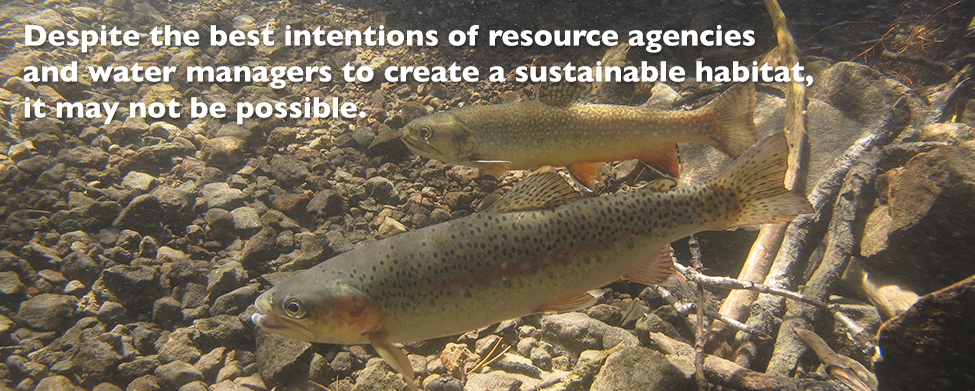
Among many factors contributing to population declines of salmon and rainbow trout/steelhead in the Stanislaus River, climate change may be the most threatening … and least understood. The National Marine Fisheries Service examined some of the potential impacts in its July 2014 Recovery Plan for Central Valley Salmon and Steelhead.
The NMFS report is intended to be a road map to rejuvenating salmon and steelhead populations after decades of decline due to stresses imposed by a variety of human activities – dam construction, water diversion, logging, pollution and overfishing. Climate change, the report suggests, poses an additional stress.
Experts agree that, in California, climate change will likely be measured in different ways — less snow and more rain in the Sierra, earlier spring runoff and higher average temperatures.
“Earlier peak flows flush young salmon from rivers to estuaries before they are physically mature enough for the transition, increasing a variety of stresses including the risk of being eaten by predators. Earlier snowmelt leaves rivers and streams warmer and shallower during the summer and fall,” the NMFS report says.
Salmon and rainbow trout/steelhead are sensitive to warmer water temperatures in rivers. Studies have shown that fish metabolism increases with water temperature and can impact growth. Eggs hatch sooner in warmer water. In some cases, young fish emerge before the insects they eat and rely on to survive are available. Diseases and parasites also are more common in warmer water.
Climate change also affects ocean temperatures. According to research published in December 2014 in the journal “Progress in Oceanography,” fish that prefer cold water – like adult salmon and steelhead — are being pushed northward along the Pacific Coast an average of 30 kilometers a year. Salmon and steelhead live in the ocean for years before they return to their native rivers and streams to spawn. If they must swim farther to the north to find cold water, that means they must migrate greater distances to spawn.
Central California already represents the southernmost point in salmon and steelhead habitat on the West Coast. If climate change persists – as most scientists believe it will in the decades to come – that calls into question the long-term viability of the species here. Despite the best intentions of resource agencies and water managers to create a sustainable habitat, it may not be possible.
